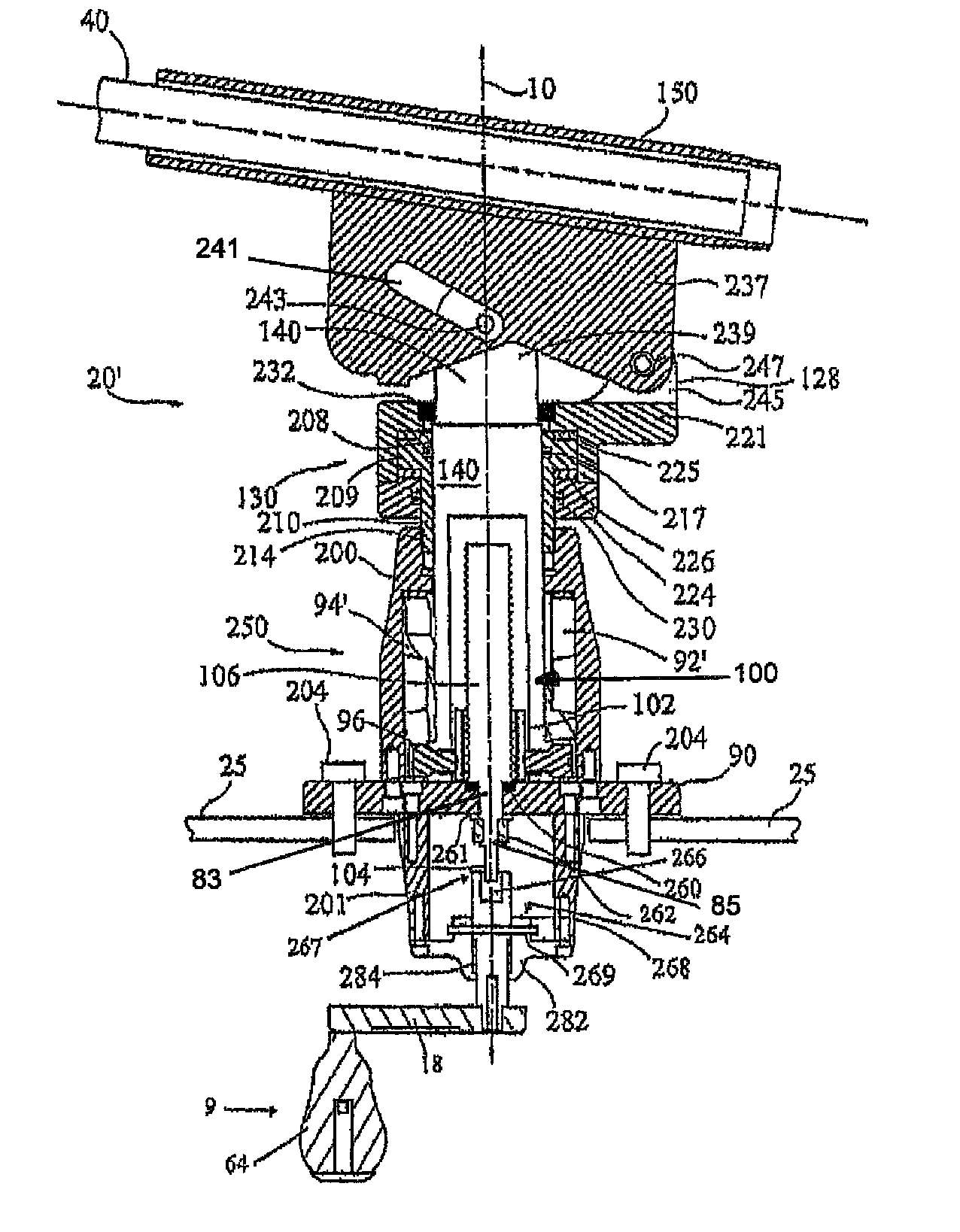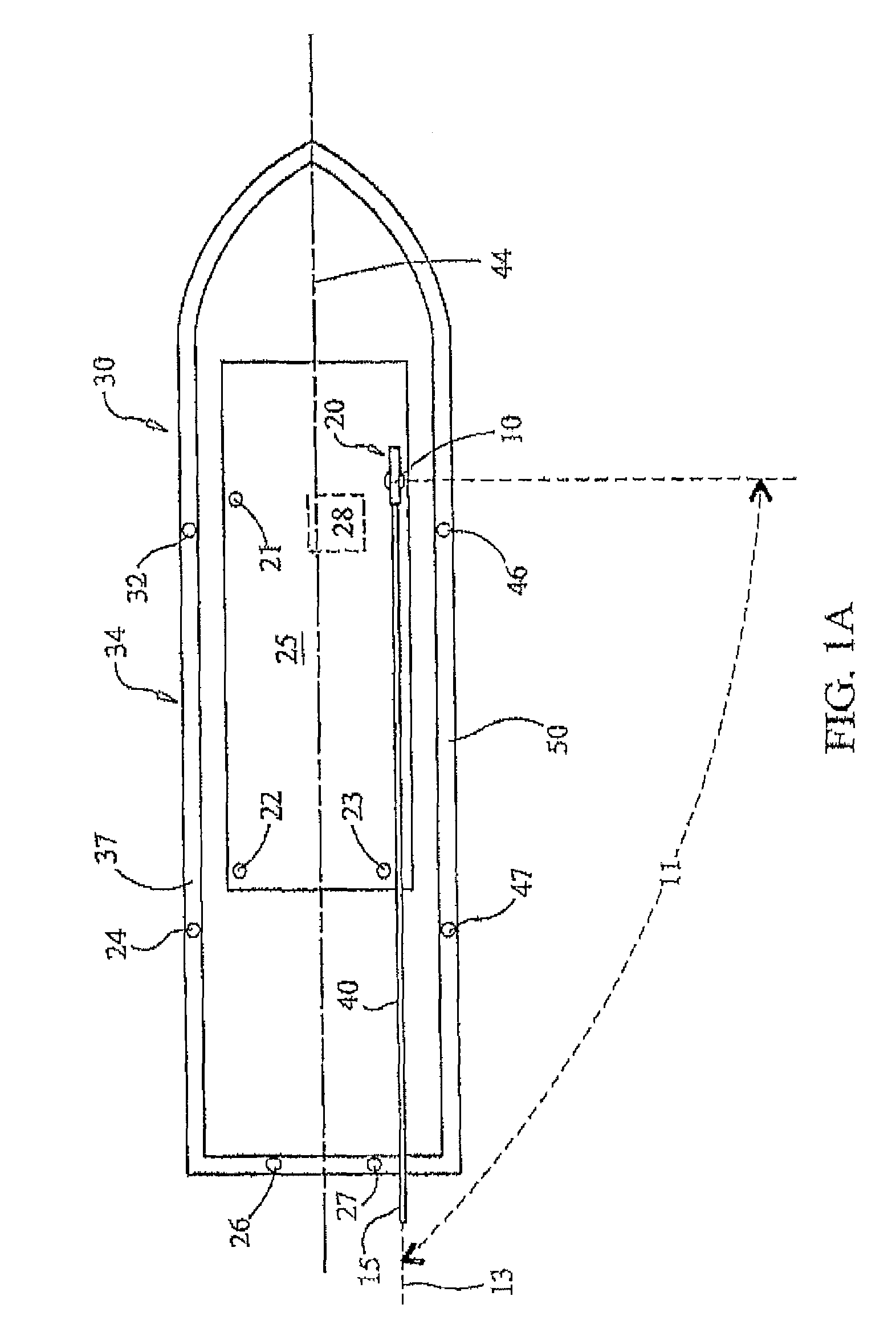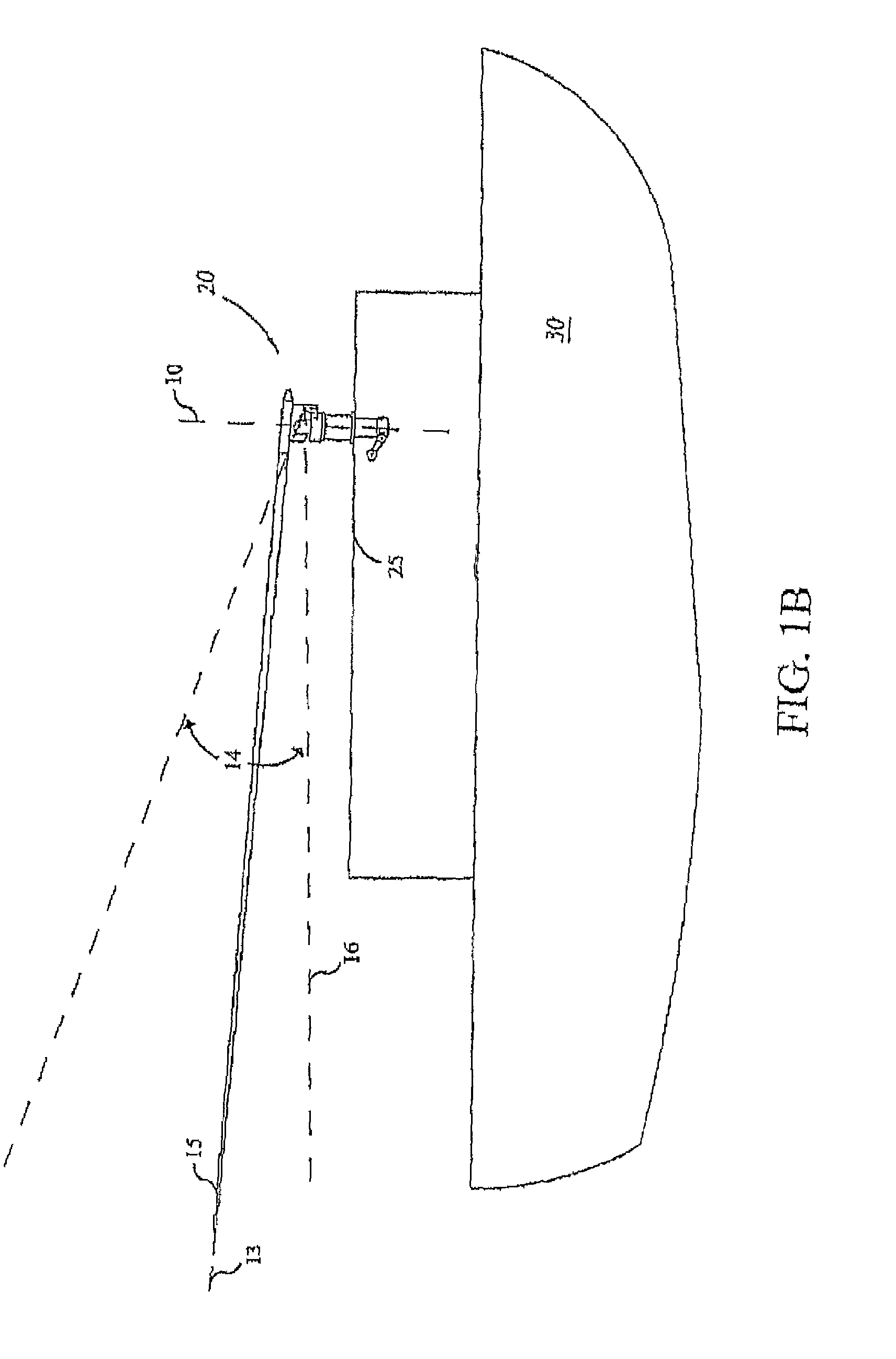Adjustable fishing outrigger apparatus
a technology of fishing outrigger and adjustment rod, which is applied in fishing, special-purpose vessels, machine supports, etc., can solve the problems of difficulty and hazards of outrigger pole in a deployed position, limited benefits of doing so, and short trolling rod length
- Summary
- Abstract
- Description
- Claims
- Application Information
AI Technical Summary
Benefits of technology
Problems solved by technology
Method used
Image
Examples
Embodiment Construction
[0039]FIG. 1A is a schematic representation of a marine vessel 30 to which is mounted a first preferred embodiment of an adjustable outrigger apparatus 20. By way of non-limiting example, apparatus 20 is shown mounted to an overhead structure 25 beneath which is located the helm station 28 of the marine vessel 30. Overhead structure 25 could suitably be for example the roof of an enclosed or partially enclosed cabin or the roof of a marine t-top or an element of a marine tower, or half-tower structure. It is to be understood however that apparatus 20 could suitably be mounted elsewhere on vessel 30 such as closer to its port side 34 including without limitation locations such as location 21 or location 22 on overhead structure 25; location 24 or location 32, on the port side rail 37, or at location 26 atop the transom 36 of vessel 30. Alternatively, or in addition to, one or more of the foregoing locations, apparatus 20 could also suitably be mounted at various locations to the star...
PUM
 Login to View More
Login to View More Abstract
Description
Claims
Application Information
 Login to View More
Login to View More - R&D
- Intellectual Property
- Life Sciences
- Materials
- Tech Scout
- Unparalleled Data Quality
- Higher Quality Content
- 60% Fewer Hallucinations
Browse by: Latest US Patents, China's latest patents, Technical Efficacy Thesaurus, Application Domain, Technology Topic, Popular Technical Reports.
© 2025 PatSnap. All rights reserved.Legal|Privacy policy|Modern Slavery Act Transparency Statement|Sitemap|About US| Contact US: help@patsnap.com



